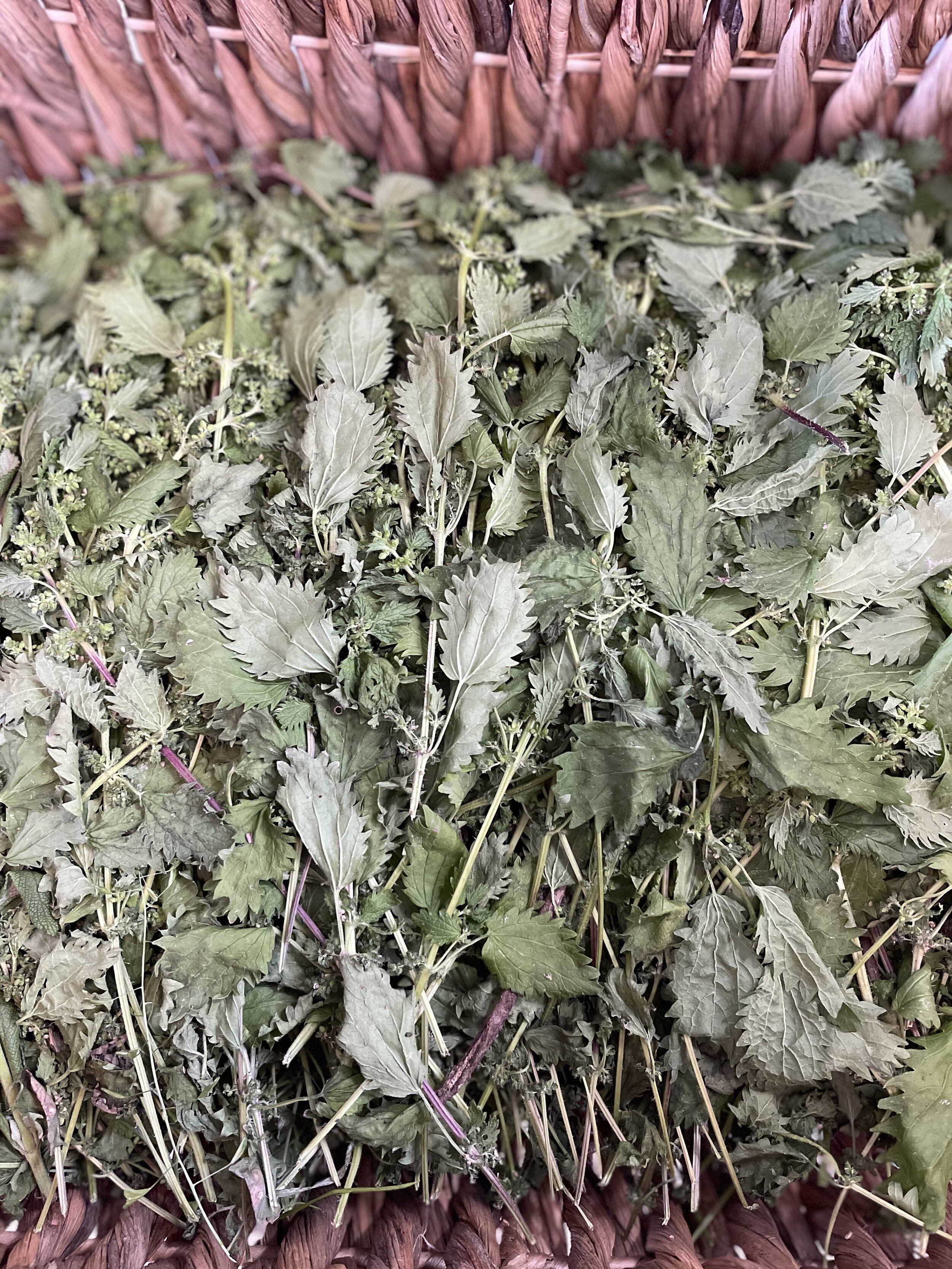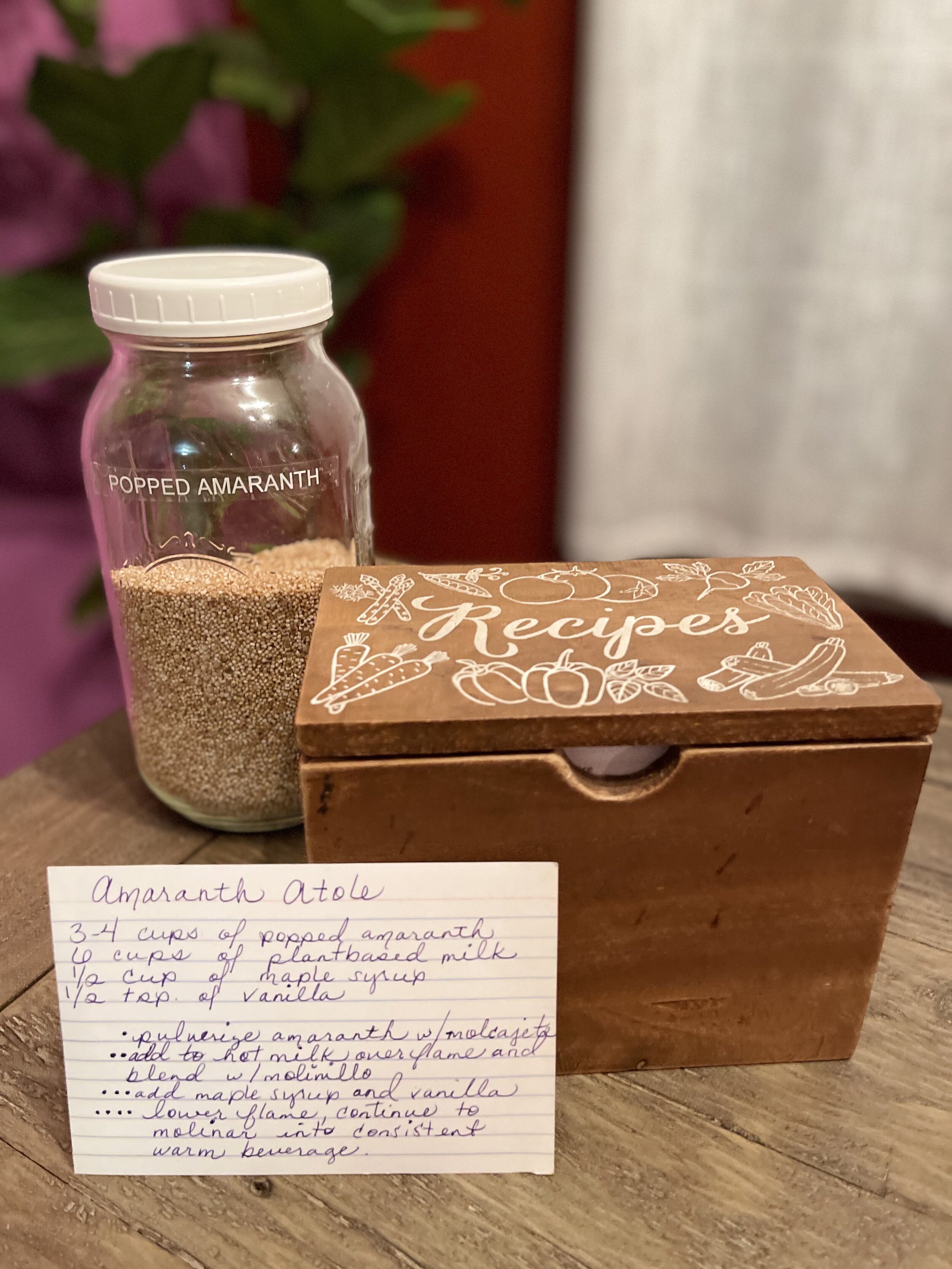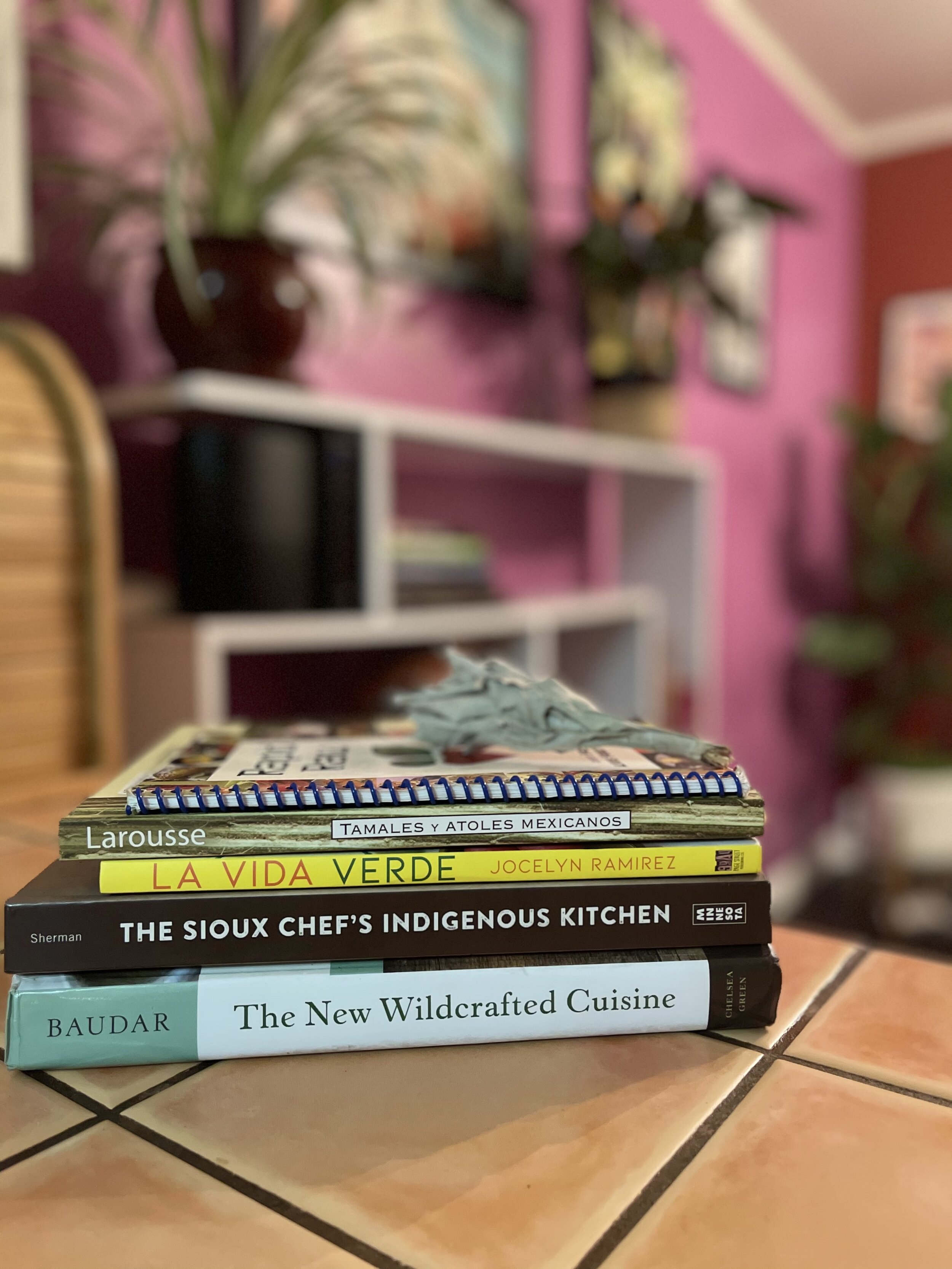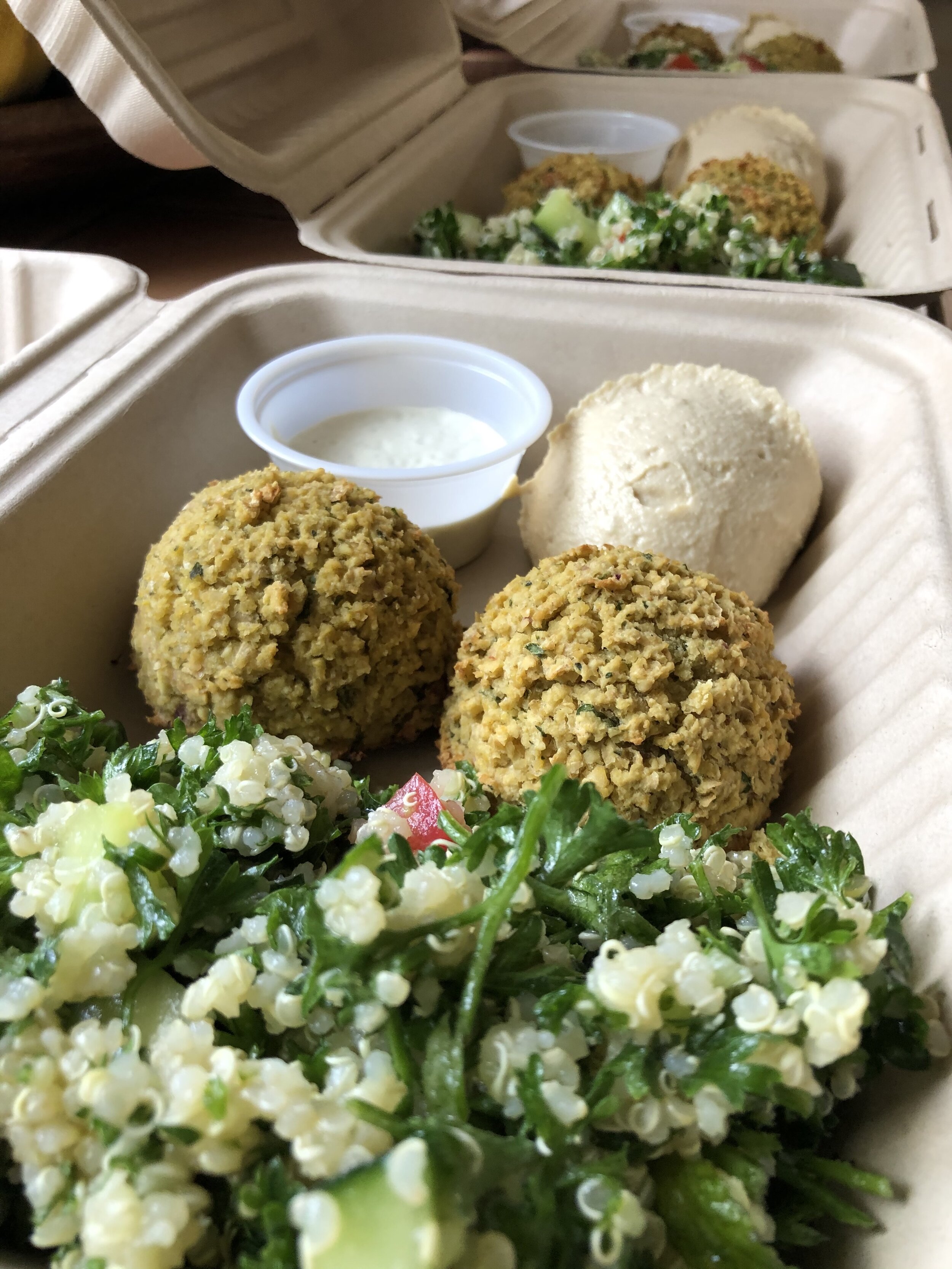Reality Bites is a feature series focused on the relationships people have with food, what kinds of cooking they’re inspired and sustained by, and the ingredients and tools that help them along the way.
For Claudia Serrato, food goes hand in hand with community. And her knowledge runs deep— she is a culinary anthropologist, decorated and public scholar, professor, chef, and womb ecologist. Her understanding of Indigenous cooking and cuisine across the United States informs her work as a Co-Founder of Across Our Kitchen Tables, a culinary hub for gender-non-conforming individuals and women of color. We caught up with her on how she brings intention into each day and reveled in her undying love for all that food can do.
What's your morning routine?
The moment I wake I create intention. Intention to heal, to feel, to express, to overcome, to learn, to grow. I take a deep breath, exhale, give thanks and rise. I greet my plantitas, stretch, and do the morning hygiene thing. I brush my teeth, scrape my tongue, comb my hair, smile at myself, moisturize my face with tepezcohuite cream and body with coconut oil. I think about my intention and dress for the occasion. I make my bed, open the curtains, greet the sun, say hello to my dogs, and with my ancestors in front, beside, and behind me, I walk out of the bedroom and become mom.
Still with intention, I greet my daughter, we hug, we smile. Then I wake the home. Curtains get opened, sage gets lit, intention gets remembered and I make my way into the kitchen. I fill a kettle with water and place it over a fire on a gas range stove. I open the fridge, pull out produce, sometimes tortillas, and other ingredients. I open a cabinet door and pull out two bags of organic Japanese green tea, sometimes yerba mate, and a large coffee cup. While drinking my tea, I prepare a wholesome and sustainable plant-based breakfast for my daughter and I. We laugh, love, affirm, and check in with each other. Sometimes we critique and express our hurt. On all occasions, we offer good words and speak and put energy into our intentions. Then with good intention, both our mornings shift...
Tell us a little bit about your background and your early relationships with food
Fortunately, my mother before, during, and after her pregnancy with me ate an Indigenous diet, mostly plant based sazonado with P’urhépecha, Huasteca, Zacatecan, and other cultural and ancestral heritage regional flavors. During my life in her womb, I tasted these flavors in the amniotic fluid I drank and was born craving, which I had the privilege to continue tasting throughout my childhood into my adulthood through my familias diet, foods, and foodways. My interest and relationship with food began the moment I was able to taste it while living in my mother’s womb.
As a child, I was fascinated by the taste of food. I loved flavor, and flavorings that complemented, enhanced, and peaked foods’ flavor. I understood this as foods’ love language telling me, “I love you.” In turn, I loved food back. Since then, I have always respected food, its life journey, the knowledge it arrives with and carries, its responsibility, and ways of creating and transmitting cultural and traditional memories. Today, food is kin. Our relationship is one of understanding, reciprocity, and responsibility to each other, our communities, and cosmovision.
How is food, for you, related to community, culture, and ancestry?
Food is the root of ancestry, the center of culture, and the maker of community—without it, these would not exist. All are in relation to and dependent on each other. One cannot exist without the other. Once you lose community, culture, and/or ancestry the food begins to dwindle. It is the ancestral heartbeat of community and culture.
How would you describe your diet and relationship to eating?
I do my best to eat a regenerative, Indigenous, plant based, and decolonial diet. This means that my diet predominantly consists of local, ecological, seasonal, sustainable, organic, and native foods from farms, gardens, or wild harvests and includes grains, legumes, quelites, vegetables, fruits, nuts, and seeds. Indigenous veganism initially guided my foodways: that is a veganism rooted in Indigenous principles of being a relative and practicing reciprocity, stewardship, and care for all my ecological relations. Throughout the years, I have begun to abandon using the word “veganism” as it is historically situated in ideologies of white racial purity. I prefer to speak of my ways of eating as Indigenous and plant based and/or decolonized by reIndigenizing my diet, foods, and foodways.
what does a typical day of eating look like for you?
On a typical I’m vibing and living my cosmic vision kind of day, breakfast can look like an atole, a hot, thick porridge that can be slowly slurped or eaten in warm bites with a spoon. I make mine out of quinoa, amaranth, blue corn, and cacao with a bit of maple syrup or agave and a nut-based milk. Then, to carry me into lunch, I create a heavily diverse snack plate that includes fresh and dried fruit, nuts, and seeds with a side of probiotics and apple cider vinegar. Midday meals vary anywhere from vegetable soups, quelite salads, and/or a green smoothie. It just depends on my taste buds and cravings. Dinner time is the most celebrated meal in my home. It is almost always Indigenous and culturally based. These meals range from a calabacita casserole to a spicy chile rojo nopal dish with a side of wild rice and frijoles mayocoba.
How do you go about planning and prepping your meals?
Aside from maintaining a staple food supply and weekly meal prepping, on occasion, I prepare large batches of a food item and/or a meal. One of my favorites to make is five gallons of lemongrass tea, which in a matter of days will be enjoyed throughout the day, night, and with family meals. Another yummy large batch food item my daughter and I prepare is kale chips. It just does not make sense to make just one bunch. Go big or go home! It is also nice to make a meal where leftovers remain. When this happens, I air and seal tight food into a freezer bag. I sometimes do this purposely so I may have a complete second meal for another day. All I need to do is defrost, bake, and enjoy!
What’s your food shopping strategy?
My present food shopping strategy is simple. I keep a staple food supply in the loop that usually makes up my breakfast, snack, and midday meals. However, for the main course of the day, I go around asking family members what tastes or meals they crave. Sometimes we are in sync, which makes meal planning easier. Other times, I create a week's worth of meals weaving in some of my family’s suggestions, creating a wholesome, balanced, and culturally relevant menu plan. I then allocate a meal to a day of the week while taking into consideration family schedules and appointments. Once I confirm, I create an ingredient list for each meal. I do not include the foods already in the dry and cold pantries. I then create a gathering plan as to where and when to gather. I use all resources available to me: CSA’s, gardens, farmer’s markets (Hollywood, Claremont, East Los Angeles), local grocers (there’s literally a family that goes down my street every Saturday with fresh produce), tribal producers like Red Lake Nation, health food stores like The Bee Hive, and local forage. This usually takes several hours. Once all food is gathered it is put away in its respective space and place until it is needed for nourishment.
Who do you typically eat with—do you often eat alone or with family, friends, or community?
Luckily for me, my family's eating habits are culturally rooted in kitchen spaces and around kitchen tables. We eat and spend time during and after our meal chatting, sharing, laughing, and listening to one another. It is our family time to show love, care, affirm, and to circle up in each other’s (pr)essence.
Are there times you feel uninspired to cook, and if so, how do you inspire yourself?
To be honest, yes, there have been times where I have lacked the motivation to prep, cook, and clean but I reminded myself that I am a healer and that food is my weapon and my medicine. I was gifted with the art of creating, combining, prepping, and feeding my family Indigenous, plant, and whole based meals. In carrying this gift, it is my responsibility to nurture, sustain and regenerate these foodways so that my children pass it down to their children. When I think about all this, I choose to be a responsible relative (parent and partner) and ancestor to the next generations and ‘warrior’ up with a chef knife in one hand and food in the other. Colonialism can stay out of my kitchen, out of my families’ bodies, out of our food, and out of our taste buds and memories.
What do you eat that makes you feel your best?
I thought I had an immediate answer but after thinking about what food makes me feel my best, I got stuck. It's interesting because there is comfort food that many of us have that has the ability to make one feel good but not necessarily make one feel their best. Then there is food that makes one feel their best as in alertness and emotional well-being. The food that makes me feel my best is my cultural heritage and regional food. It grounds and reminds me of who I am, who I am not, and who I have yet to become. It gives me hope, allows me to dream, and inspires my next culinary moves.
What’s always in your fridge and pantry?
I have two dry pantries and a cold pantry (my fridge). In one dry, there is always a supply of cashews, pecans, walnuts, chia seed, flax seed, quinoa, amaranth, wild rice, brown rice, and medjool dates. In the second dry pantry there is always a jug of peanut butter, canned thai coconut milk, potatoes, garlic and ginger. In my fridge, seasonal greens, chile serranos and/or jalapeños, tomatoes, onion, seasonal fruit, spirulina, and fire cider.
Are there any ingredients you avoid? Why?
There are many foods and ingredients that I do not eat and/or avoid. These include nonNative animalized and processed based foods, gluten, soy, and foods not in season. It just doesn’t align with my ethic and my body. I reject colonial foods and foodways that were intended to keep the land, my body, culture and taste buds oppressed and suppressed. The colonial diet still is chicken, cow, and pig based along with its byproducts and heavily gluten and sugar based. This did not sit well with my ancestors, my spirit, my taste buds, and my Indigenous cultural heritage. Soy is just overly processed and nonseasonal foods go against my ethic of care and land stewardship as my responsibility to my family, community, and to the generations to come.
what cookware are essential, and where do you get them?
There are a few essential cookwares that I could not be without. My Lodge cast iron and Hexclad pots and pans, my molcajete from San Luis Potosí, my molinillo from El Mercadito de East LA, and my Damascus steel Japanese chef knives.
Essential cookbooks?
For today’s Indigenous and plant based eater, I recommend The Sioux Chef’s cookbook, which is Indigenous and earth based, Decolonize Your Diet cookbook, which is mostly Mesoamerican, plant based and fusion, and finally, La Vida Verde which is Mexican/Latino plant based home-style meals. Together these cookbooks provide a range of imagined and unimaginable meals that tap into one’s ancestral and land based food and cultural memories, cultivating a taste of decolonization.
Chefs or individuals that inspire you?
I am inspired by so many chefs beginning with Chef Jocelyn Ramirez, Chef Felicia Cocotzin Ruiz, Chef Marlene Aguilar, Chef Nephi Craig, Chef Sean Sherman, and Chef Karlos Baca to name a few for their cosmovisions, emergent leadership, discipline, determination, and love for the land, culture, healing, food, and ancestral and cultural taste memories.
What are your favorite restaurants and where do you get take-out (if you do)?
My favorite go to and take-out restaurants are Asian based. My most favorite is a Korean restaurant located in the San Gabriel Valley called Jeun Tong Tofu House. Incredible tasting plates, entrees, soups, and service. It is my go to anyday! As for take-out, I prefer Japanese, Thai, and Vietnamese. I enjoy the spices, flavors, and taste memories that get created with every meal. These foods are flavorful, spicy, fill my heart with warmth, and bring on a sense of home.
Your go-to recipe?
Honestly. This has to be my chile rojo. This is a base to many meals that I prepare. I use it for my chile rojo y nopal recipe, bison tamal recipe, enchilada potosina recipe, and pozole recipe. It provides spice and an earth red silk feel and color to every meal. It was actually featured in The New York Times, December 2020.
all images provided by claudia serrato, interview by marina sulmona










